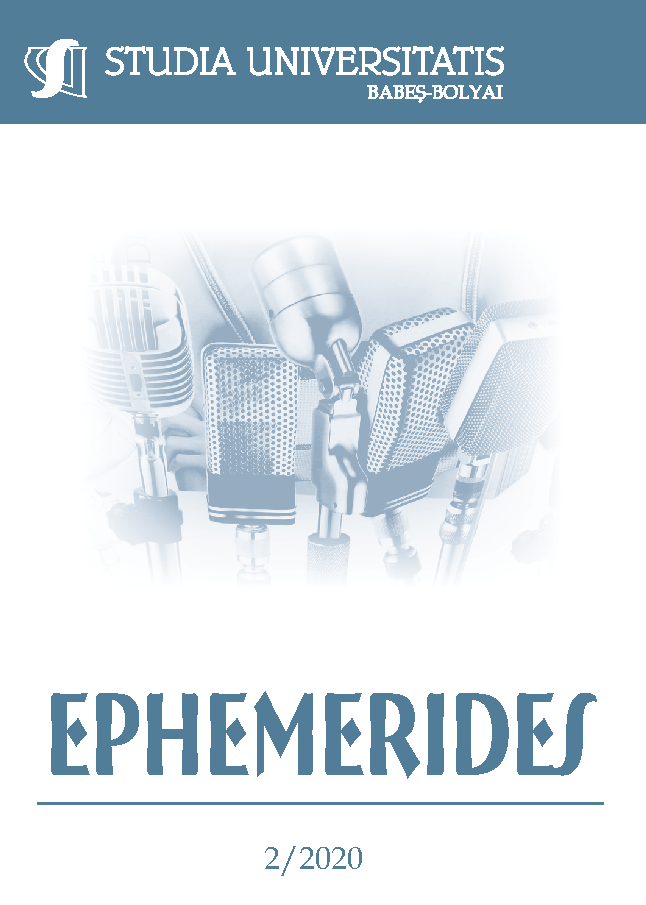SYMBOLIC GOODS IN ISRAELI POSTERS
DOI:
https://doi.org/10.24193/subbeph.2020.2.05Keywords:
Symbolic Goods, Posters, Marketing, Ideology, Zionist Movement, Israel.Abstract
This article deals with symbolic goods in posters in Israel from the period before the establishment of the state to the present day. The poster and the symbolic goods that appear in it, serve as an agent of ideological companies. In this study, I will examine the nature of the relationship between the symbolic goods and the Zionist-Israeli ideology, by comparing the symbolic goods represented in them over time and space. The questions the research asks are: What are the contribution and importance of symbolic goods as an ideological tool in Israeli posters? Has the world of symbolic goods that served Zionist ideology origin or been borrowed from other ideologies? The methodology is Qualitative research by: study case, Visual – genealogical. The conclusions of the study indicate the importance of the symbolic goods in the foundation of the State of Israel by posters and other media. The symbolic goods that characterize the posters in Israel, consist in part of content related to Jewish tradition and religion (Bible stories and myths) and its other part is influenced by the symbolic goods appropriated from ideologies around the globe.References
Abrudan, E. (2012). “Media audience as a community based of visual meanings.” In Visual Culture. Galaxia Gutenberg.
Abrudan, E. (2012). “Postmodern Visual Culture.” In Visual Culture. Galaxia Gutenberg.
Althusser, L. (2003). About the Ideology. In Hebrew translation by Ariella Azoulay. Tel Aviv: Resling.
Arieli-Horowitz, D. (2008) Art and Tyranny: Avant-Garde and Art Recruited in Totalitarian Regimes. Tel Aviv: Tel Aviv University, Publishing.
Barth, R. (2013/1977.) The Rhetoric of the Image. In T. Liebes and D. Levin (Editors), Communication as Culture. Volume II: An Inside Look at the World of Communication: Place, Time, Producers and Content Raanana: The Open University. Pp.97-107
Barth, R. (2004). “The rhetoric of the image.” In: T. Liebes and M. Talmon (eds.) Communication as Culture. Tel Aviv: Open University Press.
Barthes, R. and Foucault, M, (1967), The Author's Death, What is the Author? Dror Mishani, (2005) Tel Aviv: Resling Publishing
Bourdieu, P. (1984). The Field of Cultural Production: Essays on Art and Literature. New York. Columbia University Press.
Bourdieu, P. (1986). “The Forms of Capital.” In: John C. Richardson (ed.), Handbook of Theory and Research for the Sociology of Education. New York: Greenwood Press.
Bourdieu, P. and Johnson, R. (1993) The Field of Cultural Production: Essays on Art and Literature, New York, Columbia University Press.
Berkowski, A. and Azariahu, M., (2014). Waving a flag! Hashomer Hatzair. flags - first hundred years. Givat Haviva: Yad Yaari Publishing Center, Hashomer Hatzair Documentation and Research Center. Pp. 7-72.
Crane, D. (1992). “Social Stratification and the Media: Audiences in Media-Saturated Societies”. In The Production of Culture: Media and the Urban Arts. SAGE Publication Ltd. California.
Dan Caspi, (2001). Pictures in Our Heads: Public Opinion and Democracy. Tel Aviv: The Open University of Israel.
De Jong, Cees W. (2010). The Poster: 1,000 Posters from Toulouse-Lautrec to Sagmeister by Purvis, Alston W., Le Coultre, Martijn F. New York: Abrams.
Donner, B. (1998). History of applied graphics. In: The Construction of Hebrew Culture. Fifth volume in the history of the Jewish community in Israel since the first aliyah. The Israeli National Academy of Sciences and the Bialik Institute: Jerusalem, pp 535-555.
Danieli, J. (1999). The ideological identity and independence of expression. In: Shaltiel, S. (editor). Art in the service of an idea - Hashomer Hatzair posters 1934-1964 Givat Haviva, Sde Boker: Yad Yaari and the Ben-Gurion Heritage Center, pp. 70- 44.
Eagleton, T. (2006). Ideology, Introduction. In Hebrew translation by Oren Hamoked. Tel Aviv: Resling.
Ofrat, G. (2014). Shao Ziona miracle and flag. In: Bahrozi Baruz, N. (Curator) Local Judaica. Judaica Artifacts Created in Eretz Israel 1442-1964 Exhibition Catalog, Tel Aviv: Eretz Israel Museum, Tel Aviv, pp. 8-23.
Foucault, Michel. (1978). Discipline and Punish: The Birth of the Prison. Translation by Alan Sheridan. New York: Pantheon.
Gabizon, R. (2007). Things and fragments of things. Editors: Ravitzky. A and Stern. Y. The Israel Democracy Institute, Jerusalem Israel, pp.107.
Manovich, Lev. (2001). The Language of New Media. Cambridge Massachusetts: MIT Press.
Mishori, A. (2000). Sheshuro looked and saw - Zionist icons and symbols in Israeli culture. Tel Aviv: Afakim Library, published by Am Oved.
Nahum Goldman. (1996). Blue and White in Color: Visual Images of Zionism, 1897-1949, Tel Aviv: Diaspora Beit Hatfutsot Publishing House and Oved.
Omar, M. (1999). Hebrew Graphics - Shamir Brothers Studio. Exhibition Catalog, Tel Aviv: Tel Aviv Museum of Art.
Panofsky, A. (2009). Iconography and Iconology: An Introduction to the Study of Renaissance Art. Translation: Aviad Shtir. Hamidrasha 12, pp. 69-92.
P. Eric Louw. (2001). “Sites for Making Meaning I: The Culture Industry.” In the Media and Cultural Production. SAGE Publications Ltd. London.
Rose, G. (2012). Visual Methodologies: An Introduction to Researching with Visual Materials, third edition. London: Sage Publications.
Tartakover, D. (2010). Jean-David - multi-faceted. Exhibition catalog, the Tefen and Omer Industrial Gardens and the Beit Reuven Museum, Tel Aviv. pp. 2-32
Trachtenberg, J. (2005). Between nationalism and art. Establishment of the art field during the settlement period and in the early years of the state. Jerusalem: YL Magnes Publishing House, The Hebrew University, Jerusalem. Eshkolot Library, Eshkol Institute, The Hebrew University of Jerusalem.
Sabag, R.: Ben Baruch: B. Yaffe, N., and Vice, N. (eds.) (2010). Art as a Visual Culture: The Middle School Curriculum. Ministry of Education, Jerusalem.
Sheps, M. (1981) In: Tartakover, d. (curator). Franz Krauss: Exhibition Catalog Posters, Tel Aviv: Tel Aviv Museum of Art.
Timmer, M. (1998). The Power of Poster. London: V&A Publications.
Kister, J. (2014). The struggle for public opinion. In: Shamir, Y. A polite spell editor will not reach the brain - only a shout will arrive. From the poster of the Jabotinsky Institute Tel Aviv: Published by the Jabotinsky Institute in Israel, pp. 15-16.
Downloads
Published
How to Cite
Issue
Section
License
Copyright (c) 2020 Studia Universitatis Babeș-Bolyai Ephemerides

This work is licensed under a Creative Commons Attribution-NonCommercial-NoDerivatives 4.0 International License.



